Andropogon glomeratus (Bushy Bluestem)
Bloom Time: September to February
Sun Requirement: Full Sun
Water Requirement: Medium to High
Wildlife: Provides nesting material for birds
Tolerates: Deer, Black Walnut, and Air Pollution
Native to North America: Yes
Zones: 5 to 9
Other: This clump-forming ornamental grass features feathery, cloud-like seed heads that turn copper-colored during the winter. These billowy plumes add a lovely texture to any garden bed and requires very little care.
Location: Howe Garden

Quercus macrocarpa (Bur Oak)
Bloom Time: April
Sun Requirement: Full Sun
Water Requirement: Low to Medium
Wildlife: Serves as a larval host for serveral butterflies, acorns are a food source for many mammals such as chipmunks, deer, foxes, racoons, and birds
Tolerates: Drought and dry soil tolerant
Native to North America: Yes
Zones: 3 to 8
Other: Growing 60 to 80 feet tall, this tree is quite the impressive specimen. It has the largest acorns of any native oak and its fall foliage is typically a muted yellow.
Location: Martin Boxwood Garden

Yucca filamentosa ‘Color Guard’ (Adam’s Needle)
Bloom Time: June to July
Sun Requirement: Full Sun
Water Requirement: Low to Medium
Wildlife: Attracts hummingbirds and moths
Tolerates: Rabbit, Deer, Drought and Erosion Tolerant
Native to North America: Yes
Zones: 4 to 10
Other: The leaves of this yucca are rich green with a broad brilliant yellow stripe–brightening up your garden year-round! In the summer, it sends out a stalk of creamy white flowers.
Location: Relics
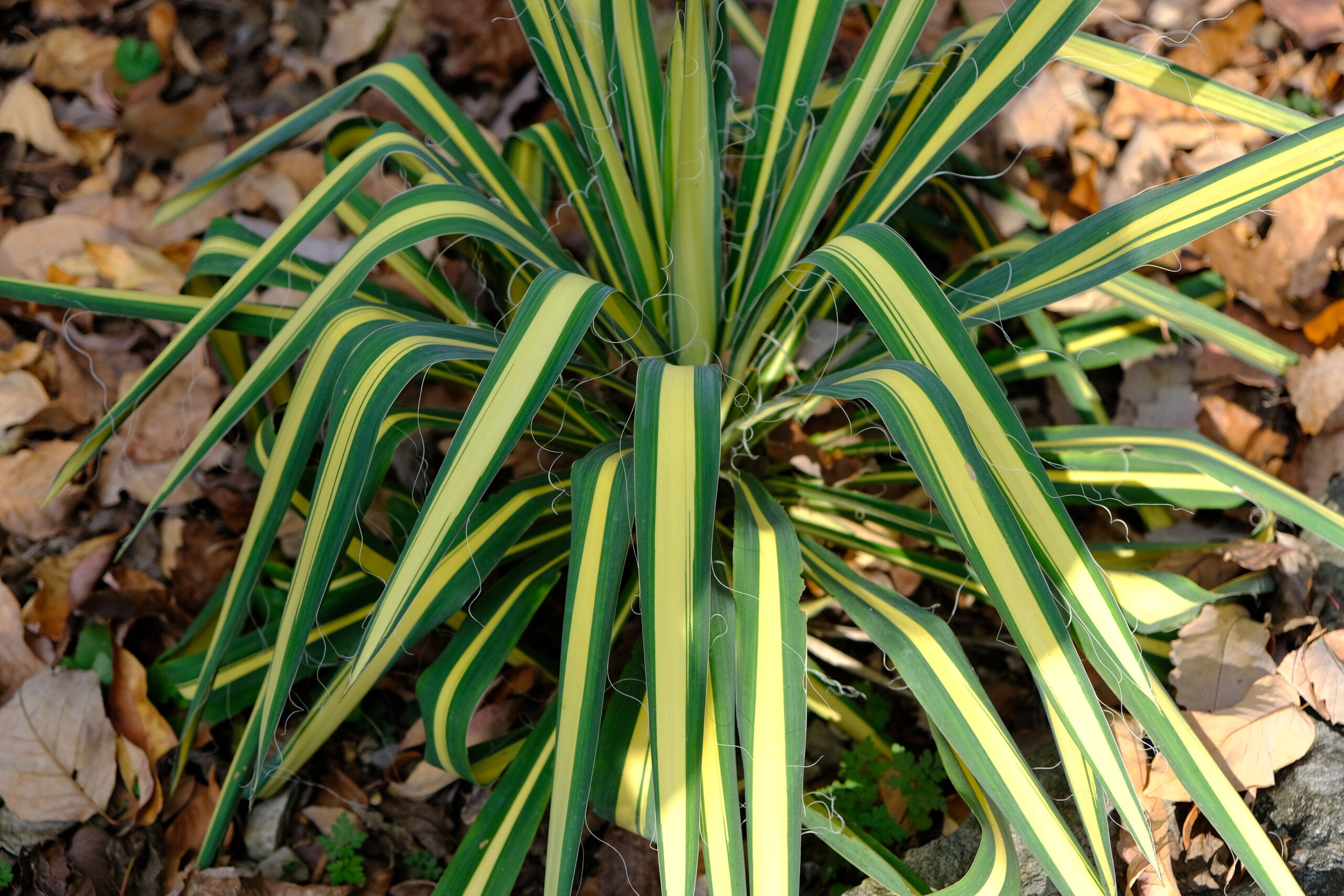
Parrotia persica (Persian Ironwood)
Bloom Time: March to April
Sun Requirement: Full Sun
Water Requirement: Medium
Wildlife: N/A
Tolerates: Clay Soil and Air Pollution
Native to North America: No
Zones: 4 to 8
Other: A majestic, medium sized tree that features bark that exfoliates to patches of green, tan, and white. In the fall, its leaves are shades of red, yellow and orange that often persist into the winter months.
Location: Carell Dogwood Garden
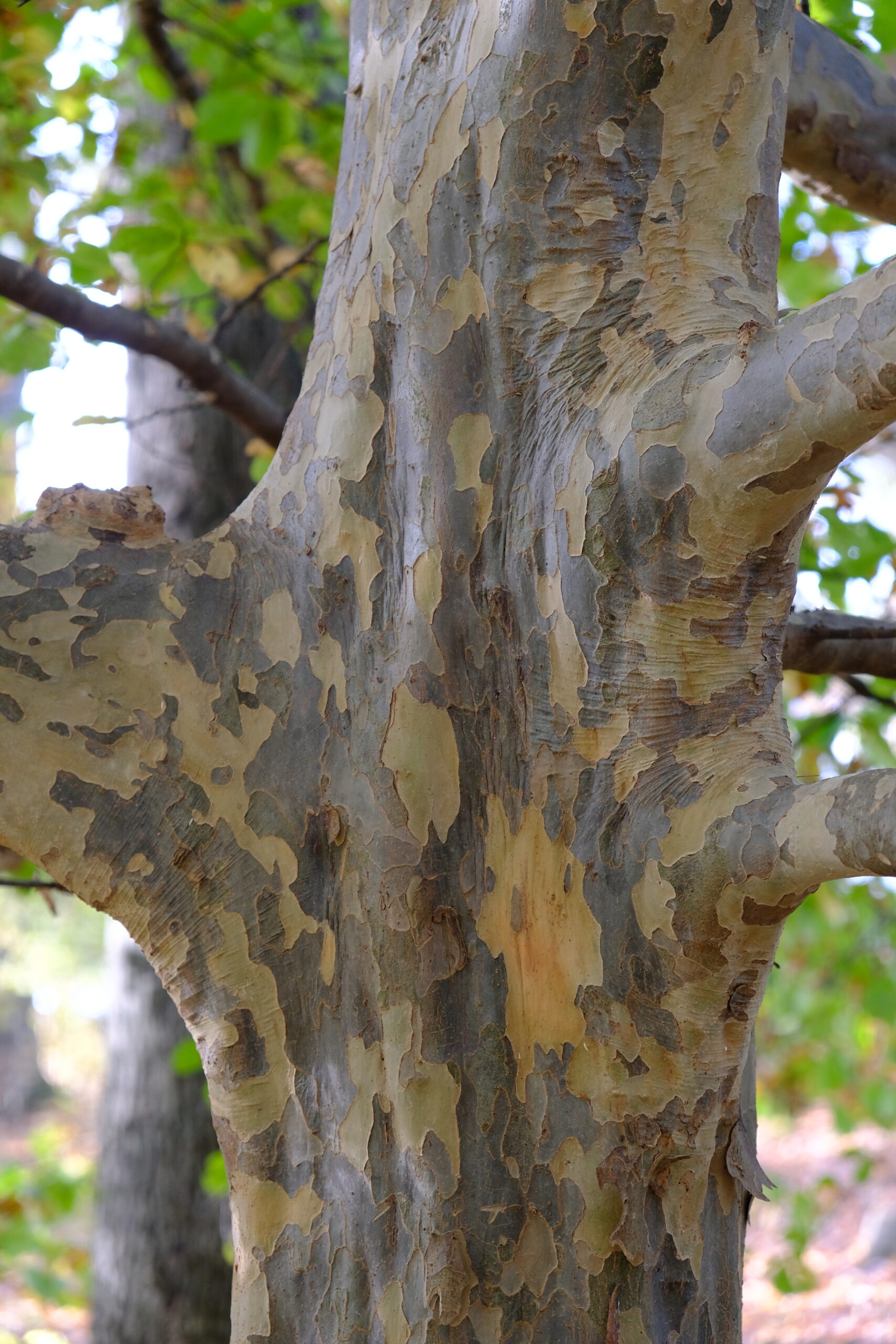
Ilex verticillata ‘Golden Verboom’ (Winterberry)
Bloom Time: March to July
Sun Requirement: Full Sun to Part Shade
Water Requirement: Medium
Wildlife: Fruit is a food source for birds and small mammals
Tolerates: Tolerates a range of soil types
Native to North America: Yes
Zones: 3 to 9
Other: This winterberry shrub has bright yellow fruit that adds a pop of color to your winter landscape!
Location: Howe Garden
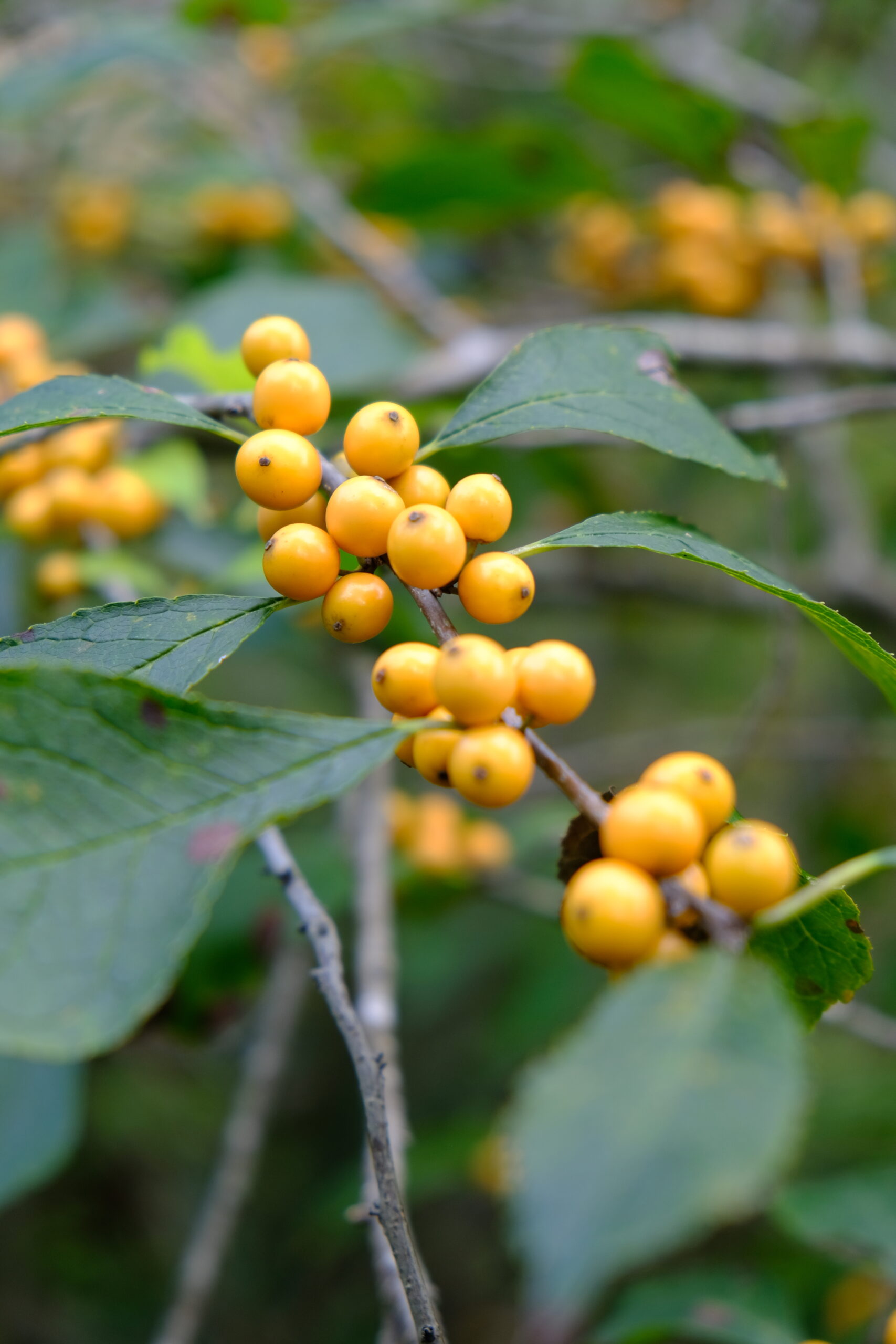
Croton alabamensis (Alabama Croton)
Bloom Time: March to April
Sun Requirement: Full Sun to Part Shade
Water Requirement: Medium
Wildlife: Attracts beetles and native bees
Tolerates: Drought
Native to North America: Yes
Zones: 6 to 8
Other: This semi-evergreen shrub is extremely rare in the wild. It grows about six feet tall and has showy pumpkin-orange fall color.
Location: Sculpture Trail
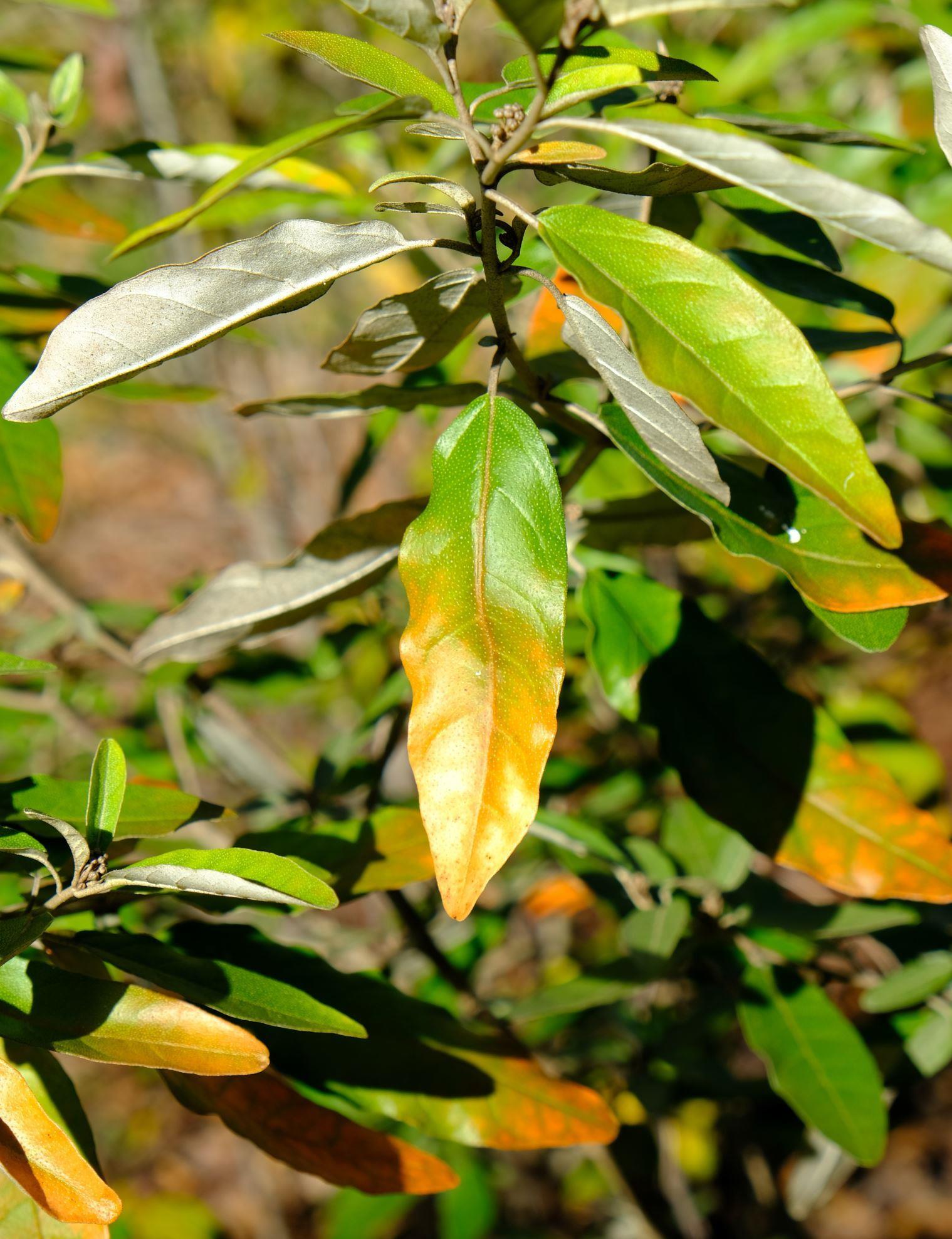
Hamamelis virginiana (American Witch Hazel)
Bloom Time: October to December
Sun Requirement: Full Sun to Part Shade
Water Requirement: Medium
Wildlife: Food source for many species of birds and attracts moths and butterflies
Tolerates: Deer, Erosion, Clay Soil
Native to North America: Yes
Zones: 3 to 8
Other: A native shrub or small tree that blooms quite late in the season, from fall into winter. It has brilliant golden fall color as well as yellow slender blooms.
Location: Herb Study Garden
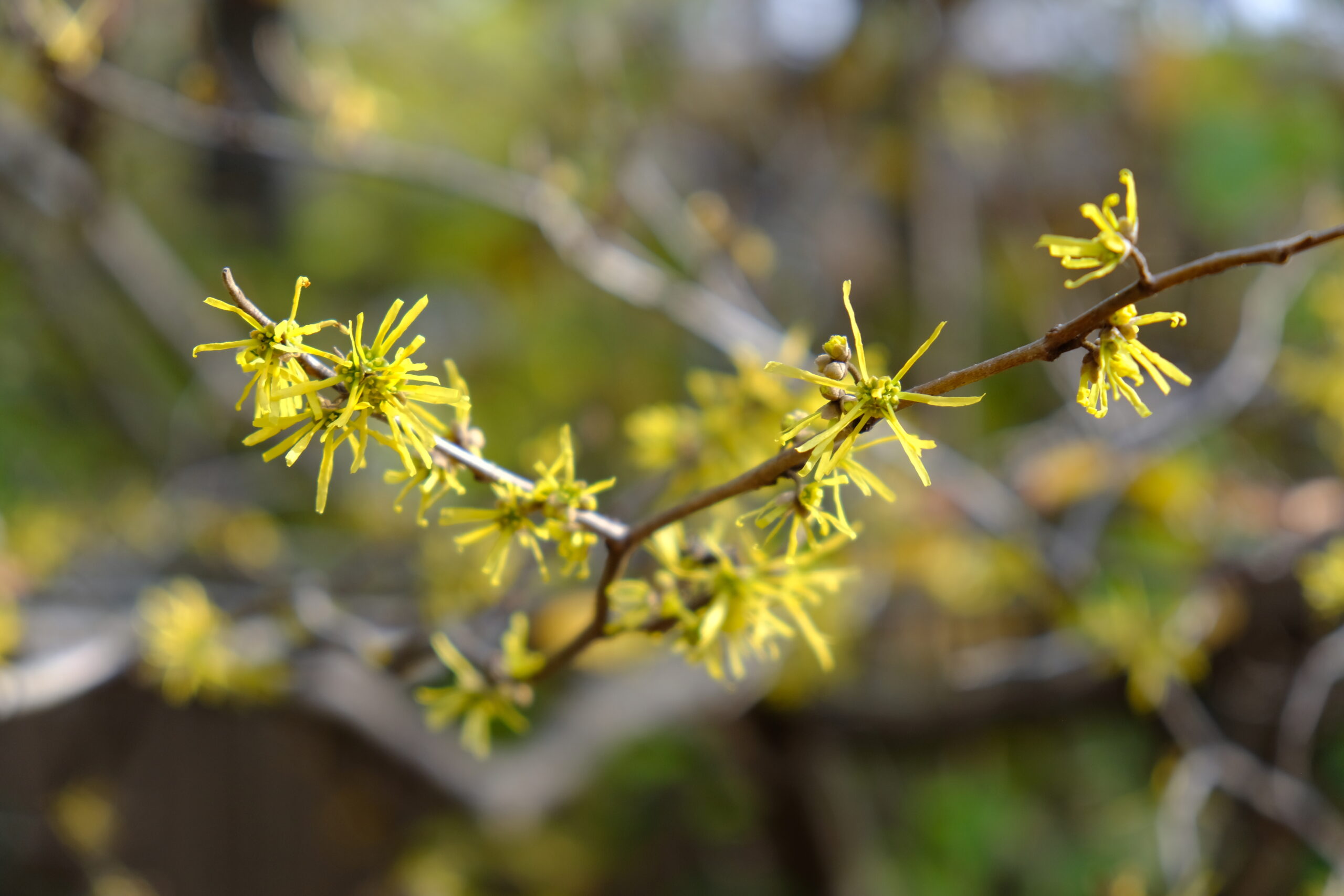
Quercus alba (White Oak)
Bloom Time: May
Sun Requirement: Full Sun
Water Requirement: Medium
Wildlife: Serves as a larval host for serveral butterflies, acorns are a food source for many mammals such as chipmunks, deer, foxes, racoons, and birds
Tolerates: Drought and Clay Soil
Native to North America: Yes
Zones: 3 to 9
Other: A great shade tree growing around 100 feet tall. The fall foliage varies from shades of dark red to brown.
Location: Bracken Foundation Children’s Garden
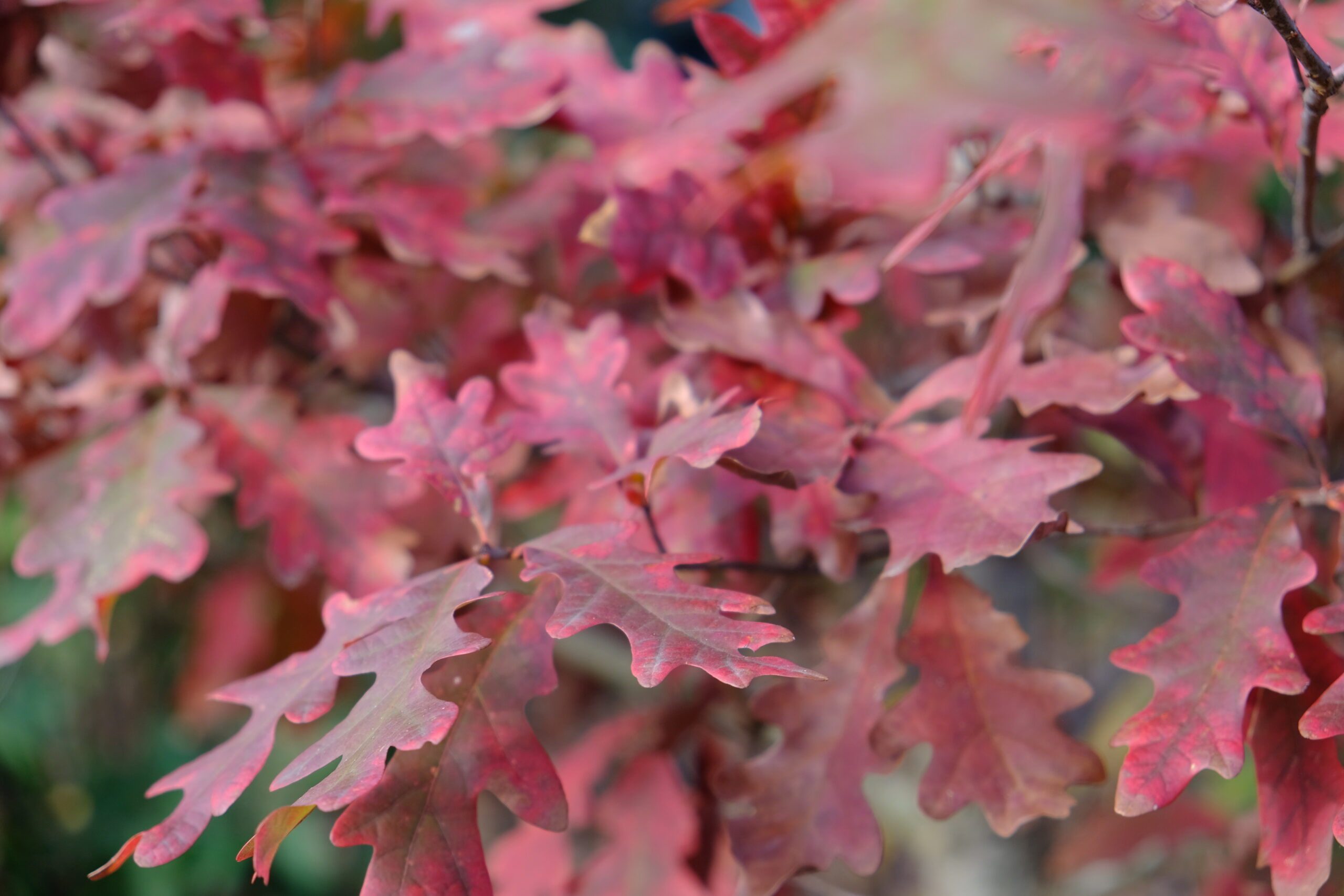
Download this month’s Top Plant Picks!